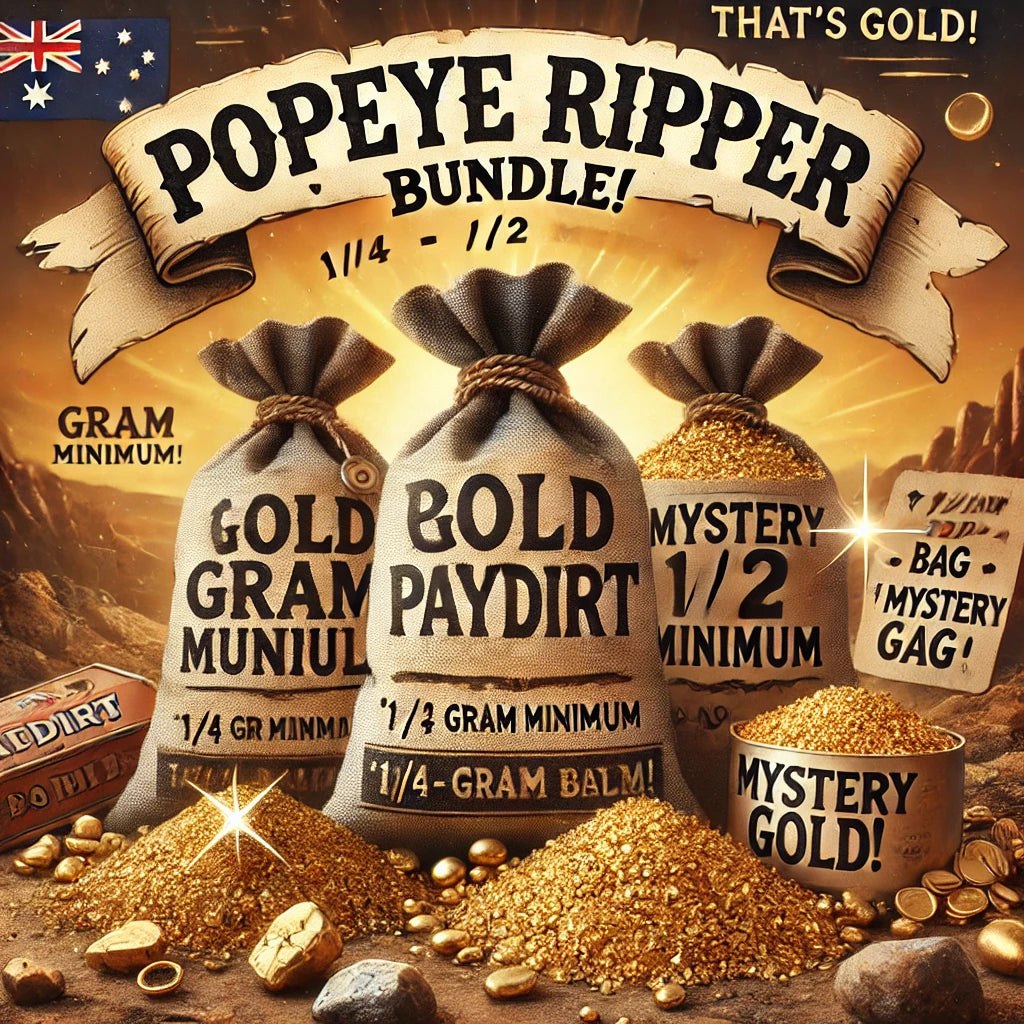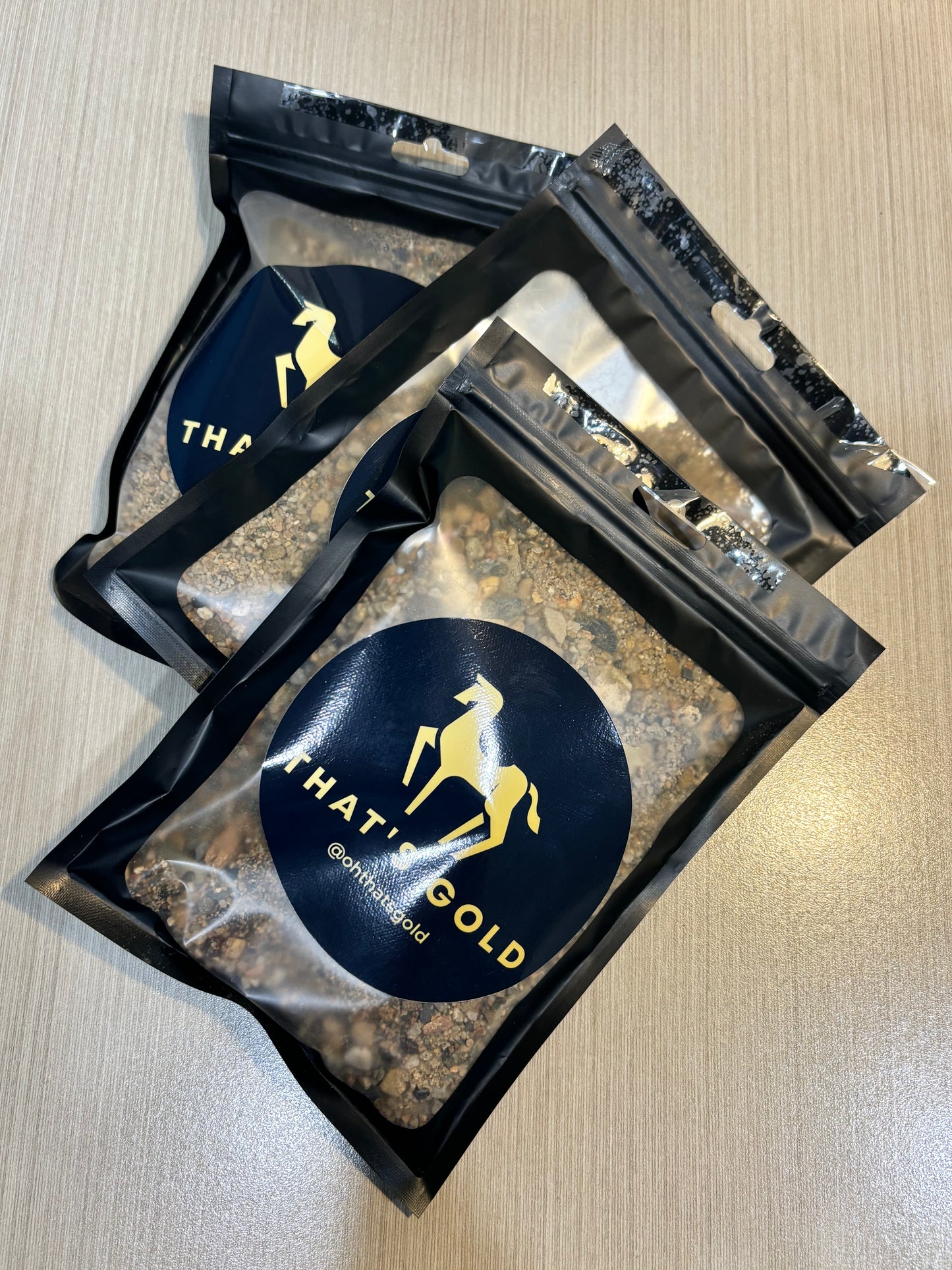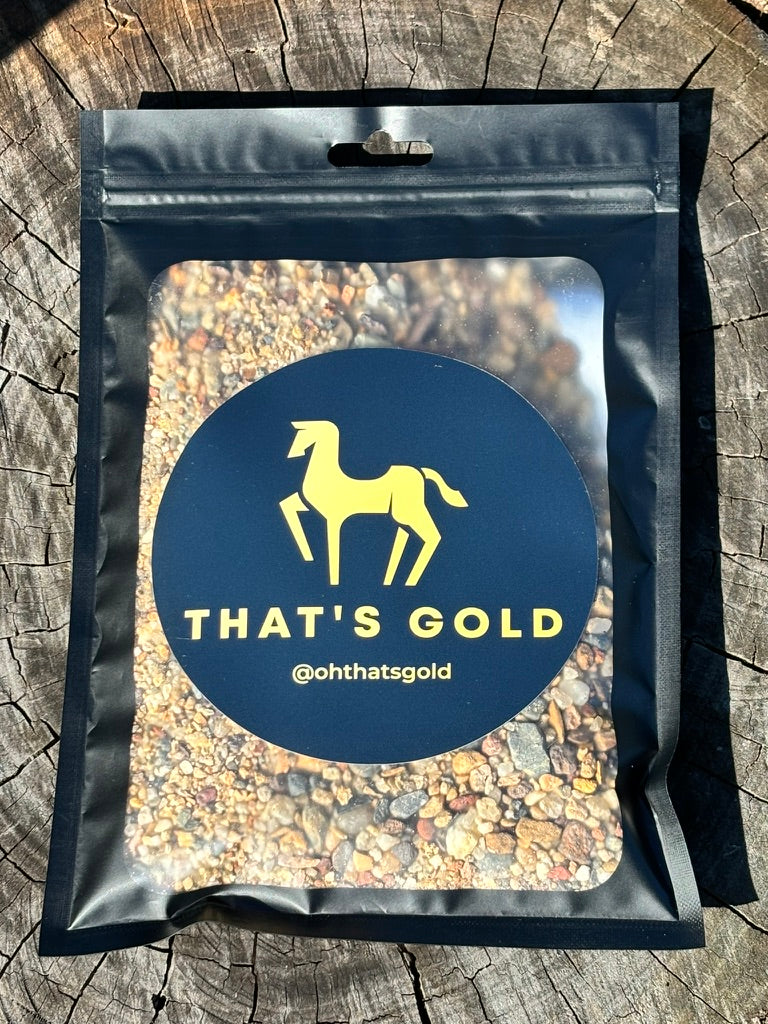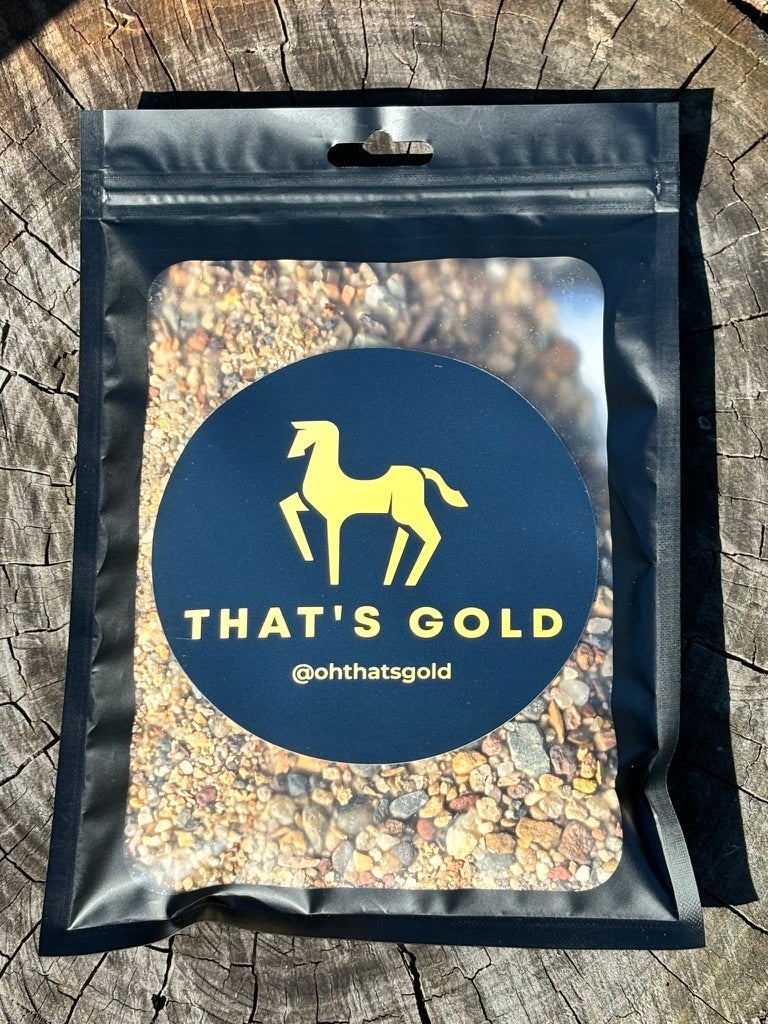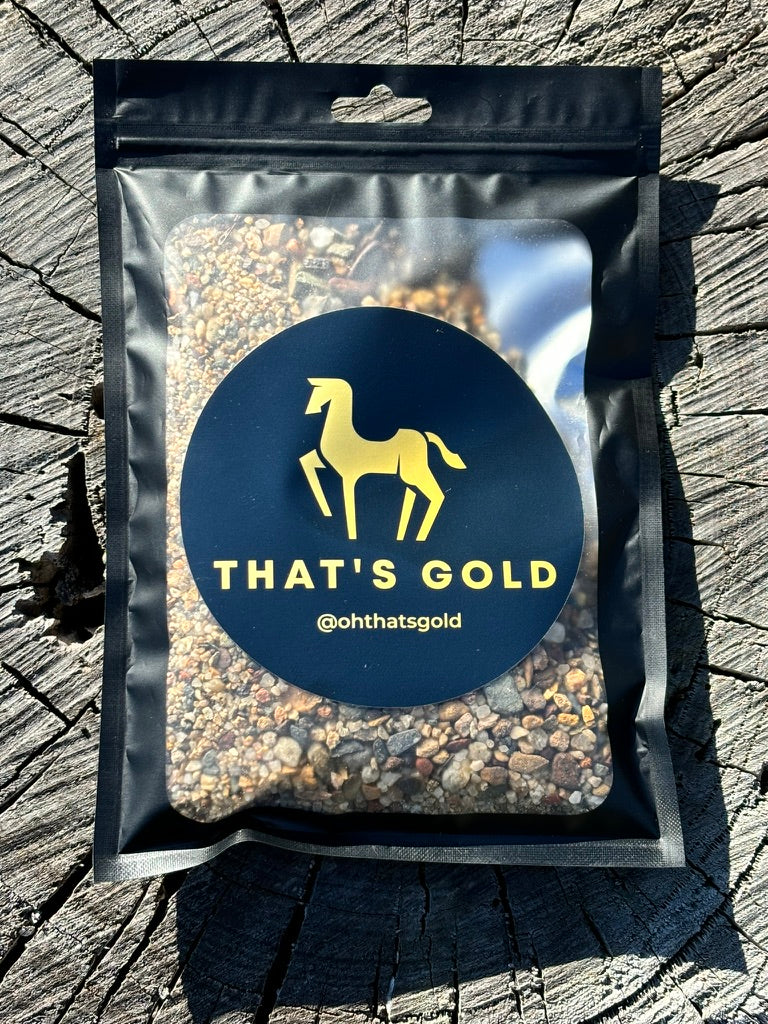Finding the right paydirt for sale can make all the difference for gold enthusiasts and treasure hunters alike. Choosing quality paydirt can lead to a valuable discovery that is truly rewarding. Whether one is new to the world of gold mining or has years of experience, understanding what to look for in paydirt is essential. The excitement of uncovering gold while panning or sifting through paydirt adds an exhilarating thrill to the experience.
Our Paydirt Collection

In Australia, many miners often use the phrase "what a ripper" to express their delight when they find something exceptional. This slang captures the joy felt when a bag of paydirt results in a promising haul. As miners explore their options, learning about reputable sellers and safe purchasing practices is vital to ensure they get the best value for their investment.
Shopping for paydirt can be an adventure full of surprises. With the right knowledge, anyone can confidently start their journey toward unearthing hidden treasures. From understanding mining techniques to familiarising oneself with market trends, every step draws one closer to striking gold.
Key Takeaways
- Quality paydirt can lead to significant discoveries.
- Learning mining techniques enhances the treasure-hunting experience.
- Safe trade practices ensure a smooth purchasing journey.
Decoding the Lingo: What a Ripper Means in Mining

Mining has a rich vocabulary that reflects the excitement and challenges of the industry. Expressions like "hit pay dirt" and "strike it rich" offer insights into the hopes and dreams tied to mining ventures.
Our Paydirt Collection
History of the Idiom 'Hit Pay Dirt'
The idiom "hit pay dirt" traces back to the late 19th century during the gold rush in America. Miners would dig through layers of dirt to find valuable minerals, and when they succeeded, they "hit pay dirt." This term has evolved into a broader expression, meaning to find success or value in any endeavour.
In Australian mining culture, this phrase is also popular. Both miners and everyday folks use it to describe unexpected gains. The phrase carries a sense of luck and effort, emphasising that success often requires hard work. It shows how mining history influences contemporary language.
Understanding 'Strike It Rich' and its Roots
"Strike it rich" is another mining expression that originated during the gold rush. When miners found a significant amount of valuable minerals, they were said to have "struck it rich." This phrase reflects the aspiration of miners seeking fortune through hard work and risk-taking.
Today, "strike it rich" has broadened in usage. It can describe any situation where someone achieves significant financial success or benefits. Whether in business or everyday conversations, this expression embodies the idea of fortune favoured by bold actions.
From 'Strike Gold' to 'Make a Killing': The Evolution of Mining Expressions
Expressions like "strike gold" and "make a killing" also highlight the excitement of discovery. "Strike gold" refers specifically to finding valuable deposits, emphasising the goal of miners. This phrase has been adapted in various contexts, representing success in different fields.
Conversely, "make a killing" focuses on tremendous profit, not limited to the mining industry. It illustrates how mining slang has permeated everyday language. These phrases serve as reminders of the thrill associated with mining and the pursuit of wealth in any venture.
Overall, terms like "what a ripper" highlight the cultural significance of these expressions, connecting people to their mining heritage.
The Allure of Paydirt: A Treasure Hunter's Guide

Paydirt appeals to treasure hunters and prospectors due to the promise of gold and valuable minerals. Understanding its characteristics and where to find it can enhance the gold rush experience.
Characteristics of Paydirt
Paydirt typically contains a mix of soil and gravel sourced from mineral-rich areas. This mixture is likely to hold gold dust, black sand, and other valuable minerals. The quality of paydirt often depends on its origin, with bags from reputable suppliers yielding better results.
Buyers should look for bags that specify the weight of the gold guaranteed within. A reliable source will provide information on the specific mine or location from which the paydirt is sourced. It is essential to read reviews and ask questions before purchasing to ensure the paydirt holds real value.
Black Sand and Gold Dust: Worth Its Weight in Gold?
Black sand is a common component found in paydirt and often contains valuable minerals. Gold dust can mix with the black sand, making it challenging to extract. Many treasure hunters believe that a higher concentration of black sand indicates a better chance of finding gold.
The value of gold dust can fluctuate based on the current gold market. Buyers should consider the spot price of gold when evaluating their potential return on investment. The thrill of panning through black sand to uncover tiny specks of gold makes this process rewarding for many.
Our Paydirt Collection
Where to Find Paydirt for Sale
Finding paydirt for sale is easier than ever due to numerous online retailers and local prospecting shops. Websites like Miners Den offer various paydirt bags, often highlighting their guaranteed gold content. Additionally, local gem shows and prospecting clubs may have paydirt sales.
When purchasing, it is wise to verify shipping options and any return policies. Buyers should compare prices and understand what they are getting with each bag. Paydirt sourced from known locations, such as Victoria's Golden Triangle, provides added assurance of quality, attracting many eager treasure hunters.
Gold Mining Techniques: Unearthing Wealth
Gold mining techniques have evolved significantly over time, blending ancient practices with modern innovations. Understanding the differences between these methods is crucial for both hobbyists and serious prospectors.
Modern vs. Traditional Mining Methods
Traditional mining methods often relied on manual techniques such as panning and shovelling. Miners would search creek beds, using simple tools to sift through soil and gravel. This method was labour-intensive but accessible to many.
In contrast, modern mining techniques leverage advanced technology. Heavy machinery, such as excavators and earthmoving equipment, allows for efficient extraction of precious metals from deep underground. These machines can move vast amounts of earth quickly, increasing the yield of gold and reducing the time spent mining.
Additionally, methods like cyanide leaching and gravity separation have enhanced the recovery rates of gold from ore. While traditional methods can still yield small amounts of gold, modern techniques are favoured for large-scale operations.
The Practicalities of Dredging for Gold
Dredging is a method that involves using a dredge to extract gold from underwater deposits. This technique is particularly effective in areas where gold is found in riverbeds. A dredge can work continuously, making it a popular choice for many miners.
In a typical setup, the dredge pumps sediment from the bottom of the waterway to the surface. Here, the heavier gold particles separate from lighter materials through gravity. This process can recover significant amounts of gold if done correctly.
While dredging is efficient, it also has environmental impacts. Disruption to aquatic ecosystems can occur, and regulations may limit where dredging can take place. Miners must carefully consider these factors to balance productivity with environmental responsibility.
The Economics of Gold: Market Insights

Understanding the economics of gold involves looking closely at its value and the potential profitability for miners. The dynamics of the gold market influence how paydirt is priced and what opportunity it presents for prospectors.
Assessing the Value of Paydirt
Paydirt is essentially dirt that is mined for gold. The value of paydirt depends on gold's market price and the potential amount of gold within the material. For example, if gold is priced at AUD 2,300 per ounce, knowing the amount of gold in grams is essential for assessing the true worth of a paydirt bag.
It’s crucial to look at the contents, as some paydirt may be seeded, meaning it has added gold to increase its appeal. Buyers should thoroughly research what they are purchasing to ensure they are getting fair value. This can include checking sellers' reputations and reading reviews. Proper due diligence can help avoid overpaying for paydirt that may not yield significant returns.
Profitability in the Business of Mining
Miners often face challenges in the paydirt market. While striking it rich with gold can happen, the reality for many is the investment may not lead to high profits. The costs associated with mining, processing, and selling gold can eat into potential profits.
Gold mining is capital-intensive. New prospectors must consider expenses such as equipment, licenses, and ongoing operational costs. If a miner purchases paydirt at a high price without understanding its real value, they risk losing money. The key lies in conducting research and knowing the worth of gold compared to their expenses.
Successful miners often build networks, share insights, and study trends in the gold market to increase their chances of profitability.
Safe Trade Practices for Buying Paydirt

When purchasing paydirt, it is vital to ensure a safe transaction. Buyers should carefully evaluate vendors and be aware of their refund and return policies. These practices help protect against scams and ensure a satisfactory experience.
Vetting Vendors: Ensuring the Real Deal
To guarantee a trustworthy purchase, buyers must conduct thorough research on vendors. Here are key steps to consider:
- Check Reviews: Look for feedback from previous customers. Reliable reviews can indicate the vendor's credibility.
- Confirm Authenticity: Ensure the vendor sources paydirt from reputable locations. Materials from known gold-producing areas are generally more reliable.
- Contact the Seller: Asking questions can clarify any doubts. A responsive seller is usually more trustworthy.
Utilising these methods can significantly reduce the risk of dealing with untrustworthy sellers. A buyer should not rush into a purchase without verifying the vendor’s legitimacy.
Understanding Refund and Return Policies
A clear refund and return policy is crucial when buying paydirt. Buyers should consider the following:
- Read the Policy: Understand the terms before making a purchase. Some vendors might not accept returns on opened bags.
- Check Time Limits: Many sellers have a specific timeframe for returns. Be aware of these timelines to ensure eligibility.
- Assess Restocking Fees: Some vendors charge a fee for returns. This could affect the overall value of the purchase.
Being informed about these policies protects the buyer’s investment. Having a good understanding can help prevent potential losses and dissatisfaction after the purchase.
Frequently Asked Questions

This section addresses common inquiries about paydirt, including what is typically found in a bag, how to identify quality suppliers, and tips for beginners. Each question aims to provide clear and practical responses for anyone interested in gold panning.
What's included in a typical bag of paydirt?
A typical bag of paydirt usually contains dirt, sand, and small gravel from mining areas. It often includes gold flakes or nuggets, though the amount can vary widely. Some bags may have other minerals or gemstones as a bonus.
How can you tell if paydirt has been tampered with?
Signs of tampering may include an unusual appearance or overly processed dirt. If the bag appears sealed but has been opened or if there is a lack of natural materials, it could indicate tampering. Always buy from reputable sellers to reduce this risk.
What are the signs of a decent paydirt supplier?
A good paydirt supplier typically has positive customer reviews and clear product descriptions. They should offer guarantees on gold content and provide shipping options. Transparency about sourcing and processing also indicates reliability.
What's the average yield from a bag of paydirt?
The average yield from a bag of paydirt can vary significantly. For example, smaller bags may yield a few grams of gold, while larger bags might have several grams or more. Reading reviews can help set realistic expectations for yield.
How do I improve my chances of finding gold in a bag of paydirt?
To enhance the chance of finding gold, use proper panning techniques and equipment. Take your time with each step and ensure thorough washing and sifting of materials. Learning from experienced panners can also provide useful tips.
What a ripper! But how can beginners get started with paydirt?
Beginners should start by purchasing small bags of paydirt from reputable suppliers. It’s recommended to watch tutorials or join local gold panning groups. Practicing panning techniques will help build confidence and skill in the hobby.

